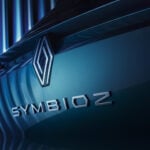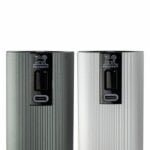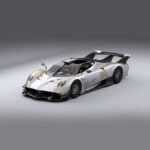As Tesla begins production at its German plant, Volkswagen is a few weeks away from finalizing plans for a 2 billion-euro electric vehicle factory, which it hopes will bring it up to par with its American rival.
Tesla says it can already produce a Model Y SUV in 10 hours at its new plant in Gruenheide, near Berlin, while VW may take three times as long to produce its all-electric ID3 hatchback.
VW now aims to reduce production times at its new Trinity plant by using techniques such as high-pressure casting and reducing the number of components in its cars by several hundred.
The plant is expected to operate in VW’s hometown of Wolfsburg in 2026. It will build a fully electric VW sedan with advanced autonomous driving capabilities.
“Our goal is clear: we want to set the standard with our production,” VW’s head of production Christian Vollmer told Reuters in an interview. “If we can get to 10 o’clock, we’ve achieved something great.”
The carmaker has improved its productivity by about 5% a year, but needs to make bigger leaps to maintain its edge in the European market, Vollmer said, without offering a new target percentage.
VW – with its stable brands from Skoda, Seat and VW to Audi, Porsche and Bentley – has a 25% share of the European electric vehicle market, 13% ahead of Tesla.
But pressure on German carmakers to control and accelerate the production of electric vehicles has been exacerbated by Tesla’s presence in the country, and VW Group CEO Herbert Diess has warned that Germans must accelerate to avoid being beaten. own land.
Giga press
VW’s goals are in line with a broader industry trend to simplify product ranges and streamline production as carmakers strive to find money to fund the transition – and keep up with rivals like Tesla, which it must not juggle the manufacture of electric vehicles and cars with combustion engines.
“Tesla has really launched the drive to reduce parts and make products simpler,” said Evan Horetsky, a McKinsey partner who was previously head of engineering at the new Tesla plant in Brandenburg. “Old producers have a harder time because they have to keep current orders.”
A Tesla spokesman said that one of the reasons it can produce its Model Y vehicles in Germany in 10 hours is that it uses two gigabyte presses, which apply a pressure of 6,000 tons to make the back of the car.
Tesla’s Gruenheide press workshop can produce 17 components in less than six minutes. With six more gig presses on the road, Tesla will soon be making the front of the car with the gig press as well.
“That’s why we’re so fast,” he said.
The giga casting technique that VW intends to adopt has been popularized by Tesla as an alternative to the more laborious method of assembling several stamped metal panels with crumpled areas to absorb energy during an accident.
BMW has rejected large castings in the past because higher repair costs outweigh lower production costs.
But proponents say that driving technology will reduce the frequency of accidents: “Tesla is designing a vehicle that is unlikely to be in a serious accident,” said Cory Steuben, president of consulting firm Munro & Associates.
Idra, the Italian company that makes giga presses, declined to say whether it works with Tesla, despite industry experts confirming that the German carmaker’s factory is using its products to create the front and rear underbody platform for the Y model.
VW “human-robot cooperation”
While VW can produce certain models, such as the Tiguan or Polo, in 18 and 14 hours in Germany and Spain, respectively, its ID3, made in Zwickau, a factory that juggles six models from three VW brands, however, it takes 30 hours to assemble.
At the Trinity plant, several work steps will be condensed into one by automation, reducing the size of the body shop and reducing the number of jobs that require uncomfortable physical work, said Vollmer, practically an extension of “human-robot cooperation. ”.
VW does not intend to have gig presses at the new Trinity factory in Wolfsburg, and will instead use the equipment from its factory in Kassel, about 160 km away, and transport the goods by train.
US investment bank JPMorgan estimates that the Tesla plant in Gruenheide will produce about 54,000 cars in 2022, 280,000 in 2023 and then 500,000 by 2025.
VW, which last year shipped approximately 452,000 battery-powered electric vehicles globally, has not yet set a production target for Trinity, which will use its scalable systems platform.
It aims to build 40 million vehicles worldwide on the new platform – which combines several internal combustion engines and electric platforms into one – with half of its global production being fully electric by 2030.
Tesla, which produced 936,000 cars last year, said it plans to make $ 20 million a year by the end of the decade, or about double Toyota’s current annual production.
However, Tesla can expect many challenges as it expands in Germany, from providing more water supplies to environmental groups upset by light pollution and congestion near the factory to unions worried about a heavy works council. management and the reduction of wages by workers who come from elsewhere.
“Starting production is nice, but volume production is the hard part,” Musk told an encouraged audience at a factory festival in October 2021. “It will take longer to reach volume production than it took to build.” works”.

 Renault’s compact family SUV will be called the Symbioz -.
Renault’s compact family SUV will be called the Symbioz -. Peugeot and its new range of salt and pepper mills -.
Peugeot and its new range of salt and pepper mills -. A new Uber Eats ad is being criticized for showing a peanut allergy -.
A new Uber Eats ad is being criticized for showing a peanut allergy -. Pagani announces new track-based hypercar, known as the Huayra R Evo -.
Pagani announces new track-based hypercar, known as the Huayra R Evo -. Introducing the Oscars in the Best Casting category -.
Introducing the Oscars in the Best Casting category -.